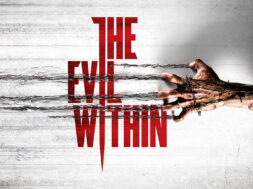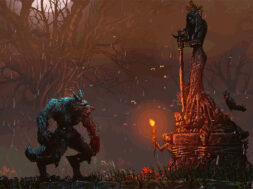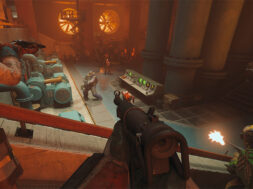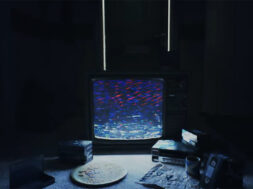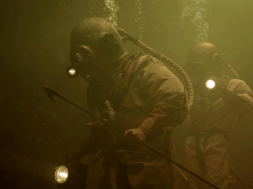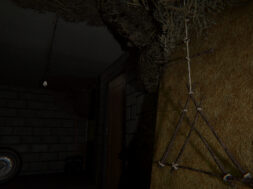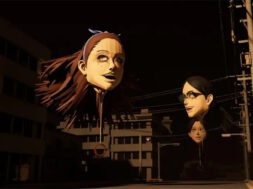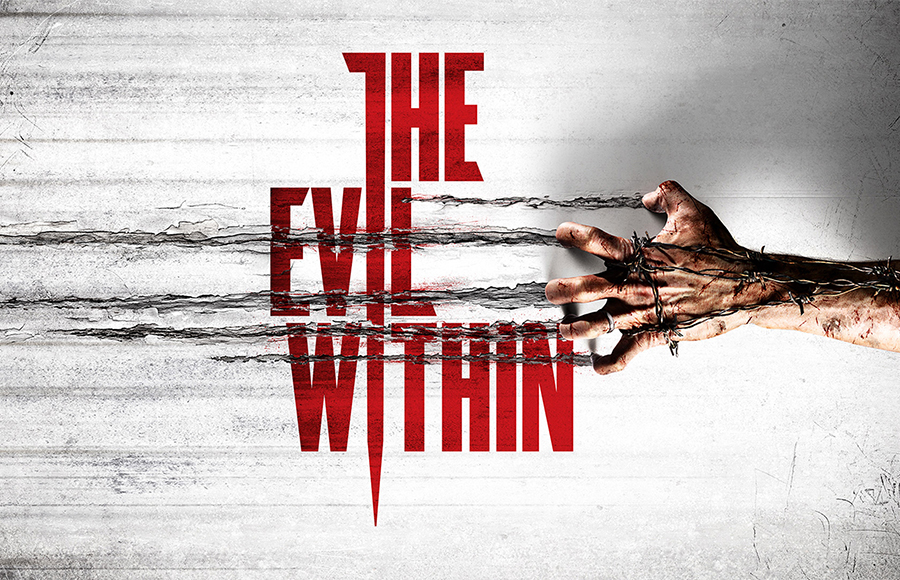
Just when he thought he was out, they pulled him back in. When Resident Evil creator Shinji Mikami left Capcom after having his fill of horror titles, the demand from fans for a new horror game followed him to his new studio, Tango Gameworks. After realizing fans were still hungry for more horror from him, Mikami set about giving them what they wanted with The Evil Within. A decade after its release, and a well-received sequel, Mikami leaving Tango Gameworks, and the studio’s subsequent closure have left The Evil Within series in limbo. Until that time if and when Microsoft decides to return to the series, we look back on The Evil Within, and just what made it a joy to play for those who followed Mikami’s career.
The Evil Within centers on detective Sebastian Castellanos, who is investigating the scene of a gruesome mass murder at Beacon Mental Hospital with his team. During the investigation, Sebastian is separated from his fellow officers, ambushed and knocked unconscious. When he awakens, he finds himself in the nightmarish world of Stem, where hideous creatures wander amongst the dead. Sebastian must now reunite with the rest of his team, while also unravelling just what’s going on.
The Evil Within began development after Mikami had established Tango Gameworks. Codenamed “Project Zwei”, it was Mikami’s response to the growing perception that Survival Horror games were veering too far into the action realm. Indeed, at the time in 2012, Resident Evil 6 was nearing completion, and was seen as a departure from the Survival Horror formula that Mikami had established with that series. Initially, Project Zwei was conceived as a game involving a man and woman, who were chained together, hunting down a vampire. The two characters could either be controlled at the same time by one player, or two players could control each character individually. This eventually morphed into the more traditional Survival Horror title we know today.
Graphically, The Evil Within was part of that transition phase between the previous generation and the next when it was first released to PlayStation and Xbox consoles. Indeed, The Evil Within had that look of something you would find on the PS3 or 360, despite it also being released for the PlayStation 4 and Xbox One. That being said, the game still looks great today, even if some of the textures are obviously lower res than others, and if some of the models are in need a few more polygons in places. Your first real horrors in the bowels of the hospital are still just as horrific as you remember, with all of the blood and dinge being revealed as Sebastian awakens.
The creature design is also still top notch. Everyone’s favorite is the Keeper (he did get his own DLC, after all), with his design having immediate callbacks to Silent Hill 2‘s Pyramid Head. Wearing a giant safe on his head, wielding a giant meat tenderizer in one hand and carrying a sack of severed heads in the other, it’s easy to draw comparisons. And yes, while The Haunted themselves aren’t quite as gruesome as some of the other creatures, the invisible variant still elicits its jumps from the players whenever they decide to pop up right in front of you (and you’re not paying attention).
Of course, the graphics are only part of the Survival Horror formula, as you’re still needing that gameplay to drive things. And Mikami made that clear once you alert The Sadist, who chases after you with his chainsaw, leading you to take the world’s bloodiest waterslide into the sewer. The tension returns for an encore once you get back out of the sewer, as you’re forced to hide in a locker from The Sadist, eventually having to sneak (well, limp) on past him.
Unlike Mikami’s previous efforts, stealth played a big part of The Evil Within and its gameplay. Part of that was to Mikami staying true to the Survival Horror ethos of ammo scarcity. Ammo is almost ridiculously hard to come by in game, leaving you with that feeling of having to make every shot count with the ammo you did find. As a result, to conserve ammo (or you just flatly ran out), you’ll have to resort to sneaking around environments and stealth-killing enemies, which added a type of tension that was different than if you were out of ammo, and forced to run away or avoid conflict. And it worked!
Combining that with picking up weapon parts and the green gel, there’s still a satisfaction in scouring the environment for these vital pickups to give yourself an edge, being it in firepower, or just trying to stay alive. Compared to what we got with Resident Evil 6, which drifted further away from the Survival Horror ethos, The Evil Within felt far closer to a “true” Survival Horror experience in that sense. The trap mechanic, on the other hand, is still an annoyance. There’s a point where forcing the player to move cautiously through the level gets to feel like the game is playing a bad joke. You will either miss the tripwire as you move forward, or end up backing into it as you search the area. Disarming them is also a bit of a sore spot, since you have to find that “sweet spot” for the prompt, which will sometimes end up having you triggering the trap and, well…
However, as you played The Evil Within, there was also a sense of déjà vu with Mikami’s return to Survival Horror. Namely, parts of the game really did feel a lot like Resident Evil 4. In fact, a good chunk of The Evil Within has that Resident Evil feel to it. It’s certainly not a complaint. But it’s certainly not hard to draw parallels: exposition via notes and journals; an enemy with a gimmick on his head wielding a chainsaw; an area featuring a remote village that leads to a castle; moments where you’re bombarded by waves of enemies, leaving you to anchor down and fend them off, etc. Heck, you even face the final boss with a rocket launcher! In reality, it’s not that big of an issue, since The Evil Within has its own mechanics and story, but it’s worth noting, nonetheless.
What’s also worth noting is the game’s undercooked narrative will still stick out for those looking for something more “involved”. There’s a point where keeping the details vague in regards to what’s going on, revealing to the player through bits and pieces, goes from you wanting to know more to you wanting to know how it all makes sense. The sci-fi aspects of STEM, very much reminiscent of Tarsem Singh‘s The Cell, are left open to allow Mikami to get away with moments like the village and castle. Still, why does Ruvik choose to go with a medieval setting after having you go through a modern insane asylum, and then to a factory? It’s really just handwaved away, for better and for worse. True, when you think about it, the story for Resident Evil is admittedly goofy, but there was a grounded aspect to it, with all of the information presented to the player as they progressed.
In spite of the story’s shortcomings, and the obvious aping of Resident Evil 4, The Evil Within still remains a solid title that still holds up. Obviously, the game garnered enough positive reception that Tango Gameworks gifted fans a sequel three years later. And to complete things, we almost got a third entry in the series twice. 2022’s Ghostwire: Tokyo originally started out as the third entry in the series, while Tango Gameworks’ last title, 2023’s Hi-Fi Rush, appeared to tease another entry, as well.
Sadly, as we know now, Mikami left Tango Gameworks in 2023, and the studio was part of the studio closures earlier this year by Microsoft. Tango Gameworks was saved by South Korean publisher Krafton, which acquired it back in August. However, the rights to The Evil Within and Ghostwire: Tokyo remain with Microsoft, leaving fans hanging as to what the future holds for both. One can hope that we’ll one day get a third entry, but for now, there’s still a lot of fun to be had, warts and all, with The Evil Within.
